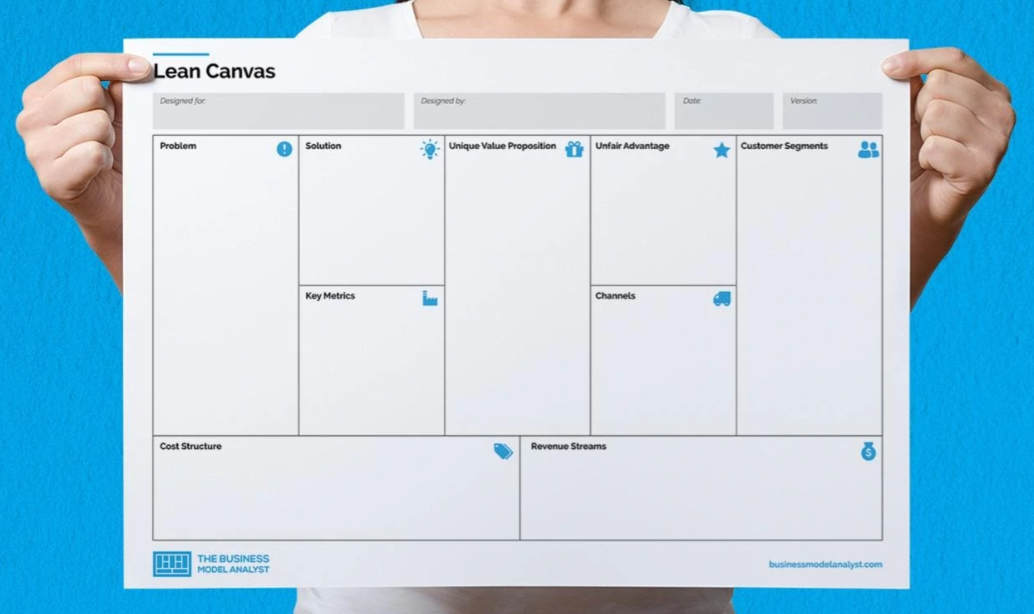Using a Lean Canvas to Support an MVP
At one point or another, every product professional will be challenged to create something new. It is at that point they will become familiar with the concept of a Minimum Viable Product. A Minimum Viable Product (MVP) is a version of a software product that contains only the essential features required to solve a specific customer problem. An MVP is created with the goal of launching a product to market as quickly as possible to gather feedback and validate the product's viability. The purpose of an MVP is to test the idea and to get feedback from customers, which can be used to refine the product.
Generally we have a very broad idea of what we are trying to accomplish and what market we are trying to take advantage of. However, often times we are way too far down the road when we realize that our idea wasn’t as good as we thought. Sometimes the solution already exists, sometimes we just don’t have the capacity to solve the actual problem and sometimes it just isn’t the right solution at the right time.
So how can we put our best foot forward? How can we consider as much as possible in order to give ourselves a better opportunity for success? I say we take a look at a Lean Canvas before we start.
What is a Lean Canvas?
A Lean Canvas is a one-page business plan template that helps entrepreneurs to articulate and test their business idea quickly and efficiently. It was created by Ash Maurya, an entrepreneur, and author of the book "Running Lean".
https://businessmodelanalyst.com/downloads/lean-canvas-template/
The Lean Canvas is divided into nine blocks, each of which represents a critical aspect of a business model. These blocks include:
· Problem: The customer's pain point or need that the business idea is trying to solve.
· Solution: The product or service that addresses the customer's problem.
· Unique Value Proposition (UVP): The unique and compelling reason why customers should choose this product or service over others.
· Key Metrics: The essential metrics that help the business track progress and success.
· Channels: The various ways the business will reach its target audience and make them aware of its offering.
· Customer Segments: The different groups of customers that the business will target.
· Cost Structure: The fixed and variable costs required to run the business.
· Revenue Streams: The different sources of revenue that the business will have.
By filling out the Lean Canvas, product professionals can quickly identify potential weaknesses in their business model and make necessary adjustments before investing significant time and resources. The Lean Canvas is a useful tool for new products, startups, and small business owners who are looking to launch or grow their business.
Using a Lean Canvas for your MVP
Using a Lean Canvas to launch a Minimum Viable Product (MVP) can help startups and entrepreneurs validate their business idea before investing too much time and resources. Here are the steps to use a Lean Canvas to launch an MVP:
1. Identify the problem: Clearly define the customer problem you want to solve and ensure that it's an actual pain point for your target audience.
2. Define the solution: Identify the core features of your MVP that will solve the customer problem. Determine what features are essential for your MVP, and which ones can be added later.
3. Determine the Unique Value Proposition (UVP): Identify what makes your solution unique and why customers should choose it over competitors. The UVP should be clear and concise.
4. Identify the target customer segments: Determine who your target customers are and what they need. This will help you tailor your solution to their specific needs. This can be easily sourced by creating some personas. A persona is a fictional character that represents a specific target audience segment. A persona is created by gathering demographic and psychographic information, behaviors, and preferences of a specific audience segment.
5. Determine the key metrics: Identify the metrics you'll use to measure your MVP's success. These metrics should be directly related to your business objectives. Establish the OKRs that the business is hoping to chase as well as KPIs that will justify the existence of your MVP
6. Define the channels: Identify the channels you'll use to reach your target customers. This could include social media, online advertising, or offline marketing.
7. Determine the cost structure: Identify the costs associated with building and launching your MVP. Determine the most cost-effective way to launch your MVP while still meeting customer needs. Be sure to ask yourself as well as your team 2 things
a. What is the cost of doing this?
b. What is the cost of NOT doing this
i. Based on OKRs and KPIs, what does the business stand to lose if your product continues to stay out of the market
8. Identify the revenue streams: Determine how your MVP will generate revenue. This could include subscription fees, advertising, or product sales.
9. Identify key partnerships: Determine any key partnerships that are necessary to launch your MVP. This could include suppliers, distributors, or other businesses that complement your solution.
Although this method is not 100% fool proof, like anything else, take the good and leave the bad. The lean canvas presents some excellent considerations that no Product Professional should ignore. Introduce this to your stakeholders before your next proposed MVP and see how many boxes they can fill.

